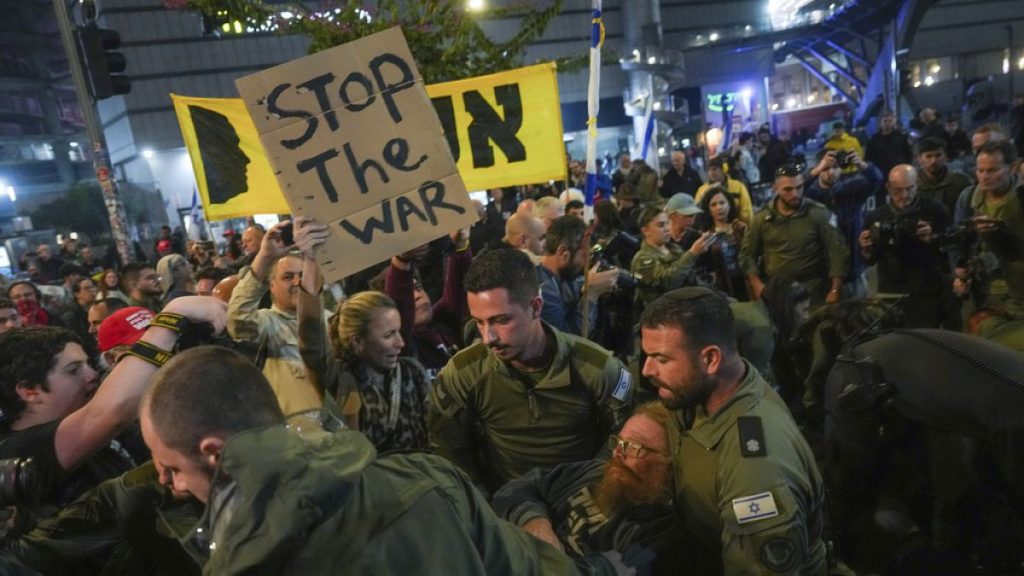The protracted conflict between Israel and Hamas, ignited by the October 7, 2023 attack on Israel, has seen a surge of diplomatic efforts aimed at securing a ceasefire and the release of hostages. Mediators from the United States, Egypt, and Qatar have been tirelessly working towards a resolution, and while a definitive agreement remains elusive, significant progress has been reported. The intricate negotiations have reached a critical juncture, with a proposed deal reportedly presented to both sides. However, the fragility of the situation is acknowledged, with officials cautioning that despite the proximity to a potential breakthrough, the possibility of collapse remains. The next few days are deemed pivotal, with the looming inauguration of a new US president adding a layer of urgency to the proceedings.
The proposed deal, the details of which remain confidential, reportedly outlines a phased approach to resolving the conflict. The initial phase centers on a partial release of hostages in exchange for a temporary cessation of hostilities, offering a window for further negotiations. While Israeli Prime Minister Benjamin Netanyahu has publicly committed only to this first phase, Hamas is pressing for a complete withdrawal of Israeli forces and a definitive end to the war. The divergent goals of the two parties underscore the complexity of the negotiations and the delicate balance required to achieve a lasting resolution. While Hamas views the initial phase as a stepping stone towards their ultimate objectives, the Israeli government has been more reserved, focusing on the immediate de-escalation of violence.
The current negotiations represent the culmination of over a year of diplomatic engagement by the mediating parties. Previous attempts at brokering a deal have faltered, highlighting the deep-seated mistrust and conflicting demands that have fueled the conflict. The scale of the current conflict, described as the deadliest in Gaza’s history, adds further pressure to the negotiators. The humanitarian crisis in Gaza, exacerbated by the ongoing fighting, underscores the urgent need for a resolution. The international community is watching closely, with hopes pinned on a successful outcome to the talks. The involvement of regional powers like Egypt and Qatar reflects the broader implications of the conflict and the importance of regional stability.
The cautious optimism surrounding the potential deal is tempered by the awareness of the numerous hurdles that still need to be overcome. Contentious issues, including the sequencing of hostage releases, the extent of Israeli withdrawal, and the guarantees for a lasting ceasefire, remain sticking points in the negotiations. Hamas officials have emphasized the importance of Israel’s commitment to ending the war and providing concrete details on the withdrawal of troops and the prisoner exchange. The complexities of these issues, coupled with the deep-seated mistrust between the two sides, make the path to a final agreement fraught with challenges.
The history of the Israeli-Palestinian conflict is punctuated by periods of intense violence followed by attempts at negotiation. The current situation echoes previous cycles of conflict and underscores the difficulty of achieving a lasting peace. The involvement of international mediators is a recurring theme, reflecting the recognition that a resolution requires external intervention. The ongoing negotiations represent another attempt to break the cycle of violence and pave the way for a more peaceful future. However, the fragility of the current situation necessitates a cautious approach, recognizing that even with significant progress, the possibility of failure remains a stark reality.
The potential for a breakthrough in the Israel-Hamas conflict offers a glimmer of hope for a region weary of violence. The proposed phased approach, while not guaranteeing a lasting peace, provides a framework for de-escalation and further dialogue. The coming days will be crucial in determining whether this opportunity can be seized upon or whether the cycle of violence will continue. The international community, regional powers, and the parties involved all have a stake in the outcome of these negotiations, and the hopes for a peaceful resolution rest on their ability to navigate the complex challenges that lie ahead. The lives and livelihoods of countless individuals hang in the balance, underscoring the profound importance of achieving a sustainable peace.














